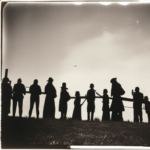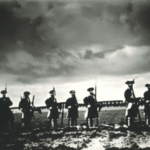The Colombian Exchange: A Global Exchange of Goods, People, and Ideas
The Colombian Exchange refers to the widespread exchange of goods, people, and ideas between the Old World (Europe, Africa, and Asia) and the New World (the Americas) following Christopher Columbus’s voyages in the late 15th century. This exchange had a profound impact on the world, shaping economies, cultures, and ecosystems on both sides of the Atlantic.
Exchange of Goods
The Colombian Exchange led to the transfer of a wide range of goods between the Old World and the New World. From Europe, crops such as wheat, barley, and grapes were introduced to the Americas, transforming agricultural practices. The introduction of livestock, including horses, cattle, and pigs, revolutionized the way Native Americans lived and hunted. In return, the New World provided Europe with crops like maize, potatoes, tomatoes, and tobacco, which became staples in European diets.
The exchange of goods also included the introduction of new materials and products. European explorers brought back precious metals such as gold and silver from the Americas, leading to a surge in wealth and economic growth in Europe. The Americas, on the other hand, gained access to European technologies, such as iron tools and weapons, which greatly improved their productivity and warfare capabilities.
Exchange of People
The Colombian Exchange also facilitated the movement of people between the Old World and the New World. European explorers and settlers migrated to the Americas in search of wealth, land, and religious freedom. This migration had a profound impact on the indigenous populations of the Americas, leading to the displacement, enslavement, and decimation of many Native American communities.
The forced migration of African slaves to the Americas was another significant aspect of the Colombian Exchange. The demand for labor in the New World led to the transatlantic slave trade, with millions of Africans being forcibly transported to work on plantations and mines. This brutal trade had devastating consequences for African societies and contributed to the growth of the plantation economy in the Americas.
Exchange of Ideas
The Colombian Exchange also facilitated the exchange of ideas and knowledge between different cultures. European explorers brought with them new scientific and navigational knowledge, which revolutionized the way people understood the world. This exchange of ideas led to advancements in navigation, cartography, and astronomy.
The exchange of ideas also extended to cultural and artistic spheres. European art, music, and literature influenced the development of new artistic styles in the Americas, while Native American and African cultures left a lasting impact on European art and music. The exchange of religious ideas was also significant, with Christianity spreading throughout the Americas and indigenous beliefs influencing European spiritual practices.
Ecological Impact
The Colombian Exchange had a profound ecological impact on both the Old World and the New World. The introduction of new plants and animals led to the transformation of ecosystems. In the Americas, the introduction of European livestock led to overgrazing and the displacement of native species. European crops, such as sugar cane and coffee, were cultivated on a large scale, leading to deforestation and the loss of biodiversity.
On the other hand, the introduction of American crops in Europe revolutionized agriculture and improved food security. The cultivation of crops like maize and potatoes led to population growth and economic development in Europe. The exchange of plants also had a significant impact on diets, with the introduction of crops like tomatoes and chili peppers transforming European cuisine.
In conclusion, the Colombian Exchange was a transformative event in world history. It led to the exchange of goods, people, and ideas between the Old World and the New World, shaping economies, cultures, and ecosystems on both sides of the Atlantic. The consequences of this exchange are still felt today, as the global exchange of goods and ideas continues to shape our interconnected world.












